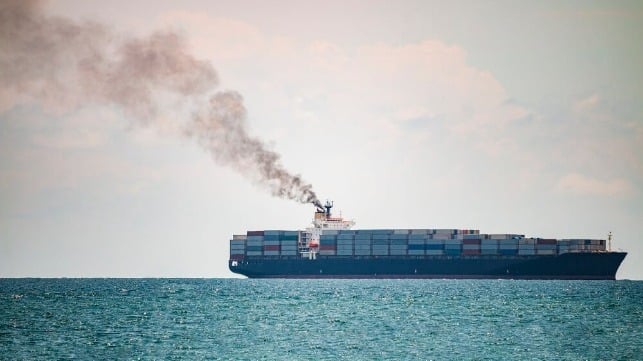Carbon Price for UK Shipping Could Raise $1.3B Per Year

As the UK’s Labor government prepares to present its first budget on October 30, the NGO Transport & Environment (T&E) has traced out opportunities for new revenue from the expansion of the UK Emissions Trading Scheme (ETS).
In an open letter to the Chancellor of the Exchequer Rachel Reeves, T&E supported inclusion of all domestic and 50 percent of UK international shipping to the national ETS. The NGO says that the resulting revenues - in excess of $1.3 billion per year - would give the government scope to provide support for the UK’s nascent zero-emission marine fuels industry.
In March 2022, the UK government launched a consultation on the expansion of the UK ETS to cover domestic shipping. Last year, the UK government, the Scottish government, the Welsh government and other UK authorities published a joint response to the consultation, recommending that the shipping industry should be included from 2026 onwards.
But even as the consultation progresses, T&E contends that implanting the policy would leapfrog the UK’s transition to clean shipping. Furthermore, it would help the UK align with the EU ETS, which has included shipping emissions since January 2024. In this regard, T&E envisions the UK’s shipping emissions scheme adopting a similar scope to that of EU ETS. In the EU scheme, revenues are directed to maritime decarbonization via the Innovation Fund and national budgets. Similarly, ring-fenced maritime ETS revenues - or an equivalent sum from other sources - could be used to capitalize the UK’s National Wealth Fund.
“At an investment rate of £3 private to £1 public, this would crowd very substantial private capital into UK-based production of renewable, hydrogen-based marine fuels. Whilst a fuel plant can take between 3 and 6 years to commence production following final investment decision, sufficient capacity for around 2.6 million tons of per year of zero-emission fuel could be both under construction and operating in the UK by 2035,” commented T&E UK.
UK shipping will require nearly 3 million tons of renewable, hydrogen-based fuels such as ammonia and methanol in 2030. On the other hand, the investment value to the UK’s domestic capacity to produce these fuels is expected to reach $36 billion between 2025 and 2035.
Meanwhile, a new research paper published this week by Cambridge University Press is advocating for regulatory cooperation and harmonization of maritime GHG pricing schemes. This would help overcome potential scenarios of double pricing, which would negatively affect shipping companies and countries in general.
The EU has already extended the application of its ETS to international shipping. The International Maritime Organization(IMO) and various other countries are also working on implementing similar schemes that put a price on GHG emissions from shipping. At this rate unfortunately, GHG emissions could be subject to multiple, overlapping pricing regimes in coming years.
The authors recommend that international institutions with experience in establishing equivalence between GHG pricing mechanisms and implementing carbon border adjustment schemes could play a key supporting role. These institutions include the International Monetary Fund (IMF) and the World Trade Organization (WTO).
